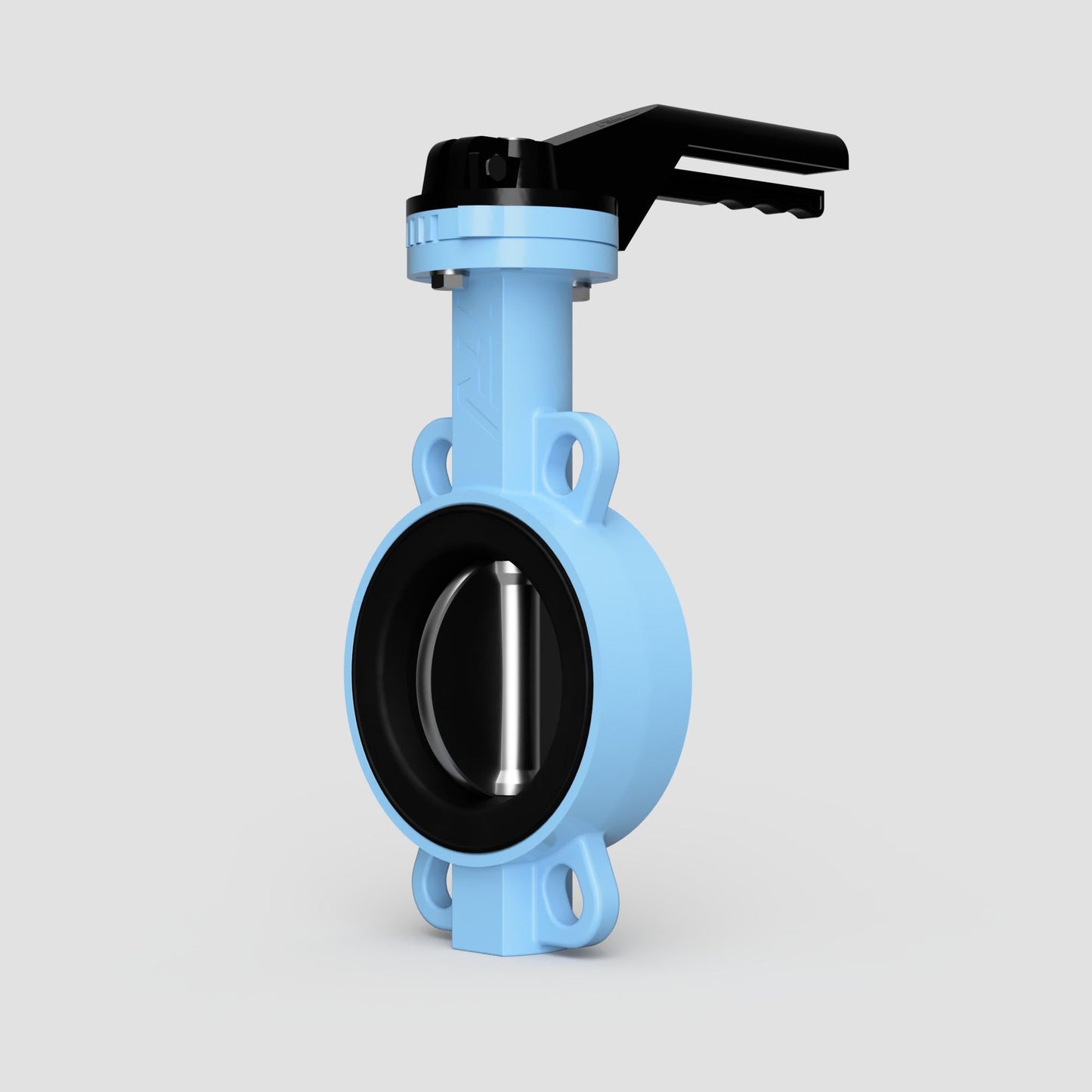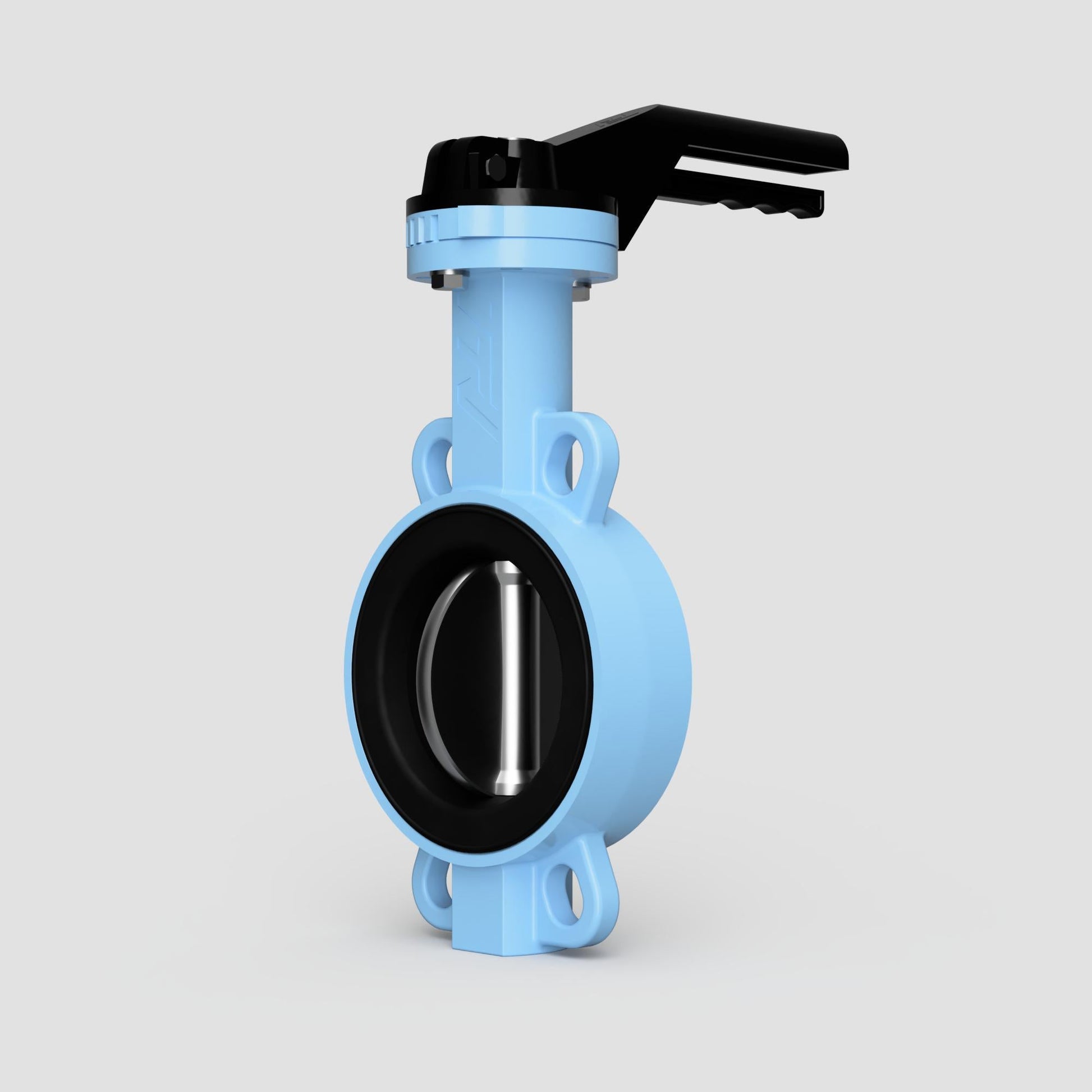Steam Valves
TTV Wafer Butterfly Valve - Viton Seat
TTV Wafer Butterfly Valve - Viton Seat
Couldn't load pickup availability
The Wafer Pattern TTV Butterfly Valve is an expertly engineered solution for dependable flow control across various applications. Designed with a PN16 pressure rating, this valve is crafted from Ductile Iron GJS500-7, known for its exceptional strength, durability, and resistance to corrosion, making it ideal for both industrial and commercial environments.
This valve features a Viton (FKM) seat, which provides superior chemical resistance, particularly against oils, fuels, and aggressive chemicals, making it suitable for more demanding applications where these substances are present. The Viton seat also offers excellent temperature resistance, ensuring the valve performs reliably under high-temperature conditions.
A key feature of this butterfly valve is its lockable lever operation, allowing for straightforward manual control. The lockable mechanism ensures that the valve remains securely in the desired position, preventing accidental or unauthorised operation. This feature is particularly valuable in settings where operational security and safety are paramount.
The wafer-style design of the valve allows for easy installation between flanges, saving space and reducing the need for additional hardware. Its streamlined construction minimises pressure drop while maintaining efficient flow control, making it an ideal choice for systems that require frequent or rapid operation.
Whether for chemical processing, oil and gas applications, or other industrial systems, the Wafer Pattern TTV Butterfly Valve with Viton seat delivers reliable performance and durability. This valve is designed to meet the demands of tough operating conditions, ensuring a long service life and efficient operation.
Share

FAQ's
What is the difference between a valve and an actuator?
What types of actuators are available?
The main types of actuators are:
Pneumatic actuators – use compressed air for fast, reliable operation.
Electric actuators – use electrical power for precise control.
Hydraulic actuators – use fluid pressure for high-torque applications.
Each type offers unique advantages depending on the environment, media, and system control needs.
How do I choose the right actuator for my valve?
To select the correct actuator, consider:
Valve type and torque requirement
Power source available (air, electric, or hydraulic)
Operating environment (temperature, humidity, hazardous area)
Control signal type (on/off or modulating)
Matching actuator torque and compatibility with the valve’s ISO mounting ensures reliable performance.
What are the main types of valves used in automation?
The most common valves in automated systems include:
Ball valves – for tight shutoff and quick operation.
Butterfly valves – for larger flow control with compact design.
Globe valves – for precise throttling and flow regulation.
Check valves – to prevent backflow.
Gate valves – for full bore flow isolation.
What’s the difference between a double-acting and spring-return actuator?
Double-acting actuators use air (or power) to both open and close the valve.
Spring-return actuators use air to open (or close) the valve, and a built-in spring to automatically return it to a safe position when power or air is lost — ideal for fail-safe operation.
How often should valves and actuators be serviced?
Regular maintenance intervals depend on operating conditions, but a good rule of thumb is to inspect every 6–12 months.
This includes checking for leaks, lubrication, seal wear, and actuator responsiveness to prevent unexpected downtime.

